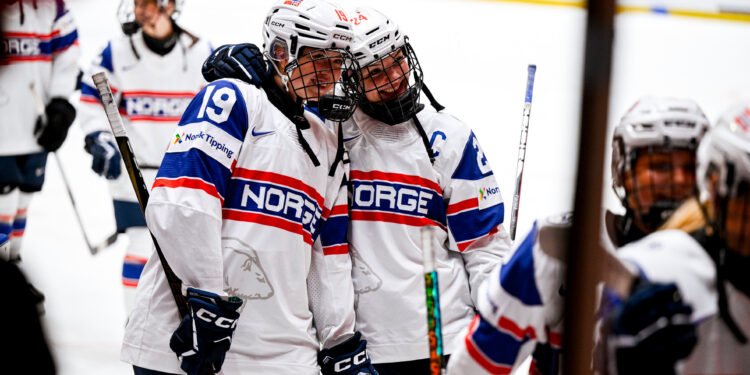In baseball, it’s three up, three down for a clean side of an inning. At the IIHF Women’s World Championships, it’s more often than not been two up, two down for promotion and relegation.
After earning promotion from the Division 1A World Championships, Hungary and Norway will find themselves back in the second division of the IIHF women’s World Championships next season. The immediate relegation following promotion is common in women’s hockey, and takes a monumental feat to avoid at the top division.
Last year, Denmark and China earned promotion, but were immediately relegated back to Division 1A. The year before it was France and Hungary. Hungary earned promotion back as soon as they could, but France missed out on coming back up in favor of Norway who made the step for the first time in 27 years. In 2021-2022 only one team was relegated being Denmark, who made the jump back up two years later, only to be relegated again.
The last team to earn promotion, and stick at the top division, was Sweden. Following the 2018-2019 season, Sweden, alongside France, was relegated from the top division of the IIHF women’s World Championships. Following COVID-19 freezing promotion and relegation, Sweden made the stop back up in time for the 2021-2022 tournament, and has not left. In fact, Sweden looks to be continuing their upward climb bucking the bouncing trend of promotion and relegation.
Why can’t teams avoid the relegation-promotion cycle?
At the most fundamental level, the issue is not on the teams or players, but on the federations who continue to vastly underfund and undervalue women’s hockey. While salary is one point, with players like Lisa Rüedi of Switzerland missing the 2024 Worlds because she could not get time off work from her job as a police officer, it’s not the only issue. At the grassroots level, the skill and player development in nations outside Canada and USA lags significantly. When you look outside Sweden and Finland, there are no viable girls hockey league for youth in Europe. When you move beyond Germany, Switzerland, Sweden, and Finland, the level of women’s leagues plummets. The EWHL also provides support for Austria and Hungary primarily, with singular outlying teams from Poland, Slovakia, Italy, and Kazakhstan.
Sweden earned and maintained promotion through a national strategy to build women’s hockey through the restructuring of youth and junior programs, up through the NDHL and SDHL. The fact players at the SDHL level can be paid well, and that the league welcomes top NCAA, U Sports and pro alumni from North America keeps the competition level high, and has allowed multiple waves of national team standouts to develop in the midst.
Who will be the next teams to climb and stay?
It’s not likely to occur immediately at the highest level. If you look at the lower levels, Slovakia looks destined to make their presence known. Slovakia earned promotion from the Division 1B tournament in 2023-24, and this year looks poised to complete the fabled double bounce from up yet another division after defeating China and France to open their Division 1A tournament. Whether they complete the monumental climb or not, they’ve already avoided the relegation-promotion cycle. At lower division tournaments avoiding the downward swing of the rebound is easier as only one team is relegated each year. As well, even small developmental improvements domestically can have significant impacts outside of the top tier of competition.
Until national federations take the development and growth of girls’ and women’s hockey more seriously, this yo-yo of teams in and out of the top division at the IIHF women’s World Championships will continue to occur.






